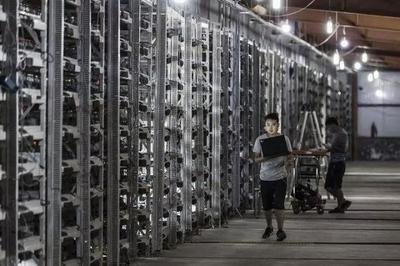In the ever-evolving landscape of cryptocurrency, mining presents both opportunity and challenge. As the digital currency ecosystem expands, so does the environmental impact of traditional mining practices. Enter the era of hosted mining solutions, where the focus on sustainability shines. By optimizing your hosted mining operations with environmentally friendly machines, not only can you enhance efficiency and profitability, but you can also contribute to a greener planet.
Electricity consumption has emerged as a critical concern for miners worldwide, especially given the energy-intensive nature of operations. Bitcoin (BTC) mining, for instance, often utilizes vast amounts of energy, leading to a significant carbon footprint. However, by investing in sustainable machines, miners can drastically reduce their energy consumption without sacrificing performance. These technologies often leverage advanced cooling systems, lower power requirements, and renewable energy sources, significantly mitigating environmental impact.

Enter hosting services that prioritize eco-conscious practices. By harnessing the capabilities of state-of-the-art mining farms, crypto enthusiasts can optimize their setups while simultaneously reducing their ecological footprint. These farms utilize modern mining rigs designed for energy efficiency, reducing wasted electricity as they mine prominent cryptocurrencies like Ethereum (ETH) and Dogecoin (DOG). A well-managed mining farm not only enhances individual mining profitability but also aligns with global sustainability efforts.
Moreover, the shift towards green mining is not just a trending topic; it is becoming a standard. Mining operations powered by solar, wind, or hydroelectric energy present a practical solution to address electricity concerns. Additionally, countries rich in renewable resources are emerging as prime locations for mining farms, further underscoring the trend toward sustainability in cryptocurrency mining.

As the market for cryptocurrencies matures, the demand for miners capable of adapting to these new standards will only grow. Investors are increasingly seeking out mining companies committed to sustainable practices, creating a competitive landscape that rewards those who innovate. Addressing both the financial and the ecological aspects of mining is now essential for long-term success. For individuals and firms hosting their mining machines, this call for sustainability offers an exciting chance to lead the way.
Integrating sustainable practices into your mining operation may involve several steps. First, evaluate the source of electricity powering your mining rigs. Transitioning to renewable sources not only helps the planet but can also reduce costs in many regions. Many mining farms are now negotiating contracts with energy providers to ensure they receive green energy credits, thus making their operations more appealing from an investment standpoint.
Furthermore, identifying and utilizing advanced technology that leads to energy savings is paramount. New mining machines are being developed with energy efficiency at their core. These machines not only mine faster but do so using less power, thereby allowing you to increase your returns—essentially mining more effectively while protecting the environment.
As the economic landscape of cryptocurrency continues to change, the acceptance and implementation of greener mining solutions will become more significant than ever. Whether it’s maximizing the productivity of your Bitcoin operations or expanding your Dogecoin hosting capabilities, embracing sustainability can yield positive results across the board.

Moreover, community engagement plays an indispensable role in promoting sustainable mining practices. The cryptocurrency community thrives on collaboration and sharing knowledge. By engaging with others in the space, miners can share their experiences and solutions, helping accelerate the transition toward greener operations. Hosting seminars, webinars, and workshops on sustainable practices could not only enhance your reputation but also establish your business as a leader in eco-friendly mining solutions.
In conclusion, optimizing your hosted mining with environmentally sustainable machines is no longer merely an ethical choice—it is a strategic necessity. By investing in modern mining rigs, utilizing renewable energy sources, and fostering a community-centric approach, miners can pave the way for a more sustainable and profitable future in the world of cryptocurrencies. As we look towards the future of Bitcoin, Ethereum, Dogecoin, and beyond, it’s clear that sustainability will play a crucial role in the success of mining operations worldwide.
















